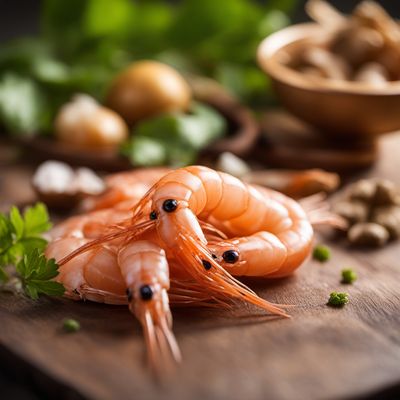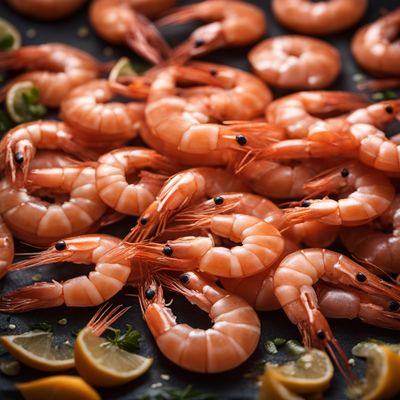
Ingredient
Natantian decapods
Oceanic Delicacy
Natantian decapods, also known as oceanic decapods, are crustaceans that belong to the order Decapoda. They are characterized by their elongated bodies, multiple pairs of legs, and a hard exoskeleton. These decapods are highly sought after for their succulent meat, which is sweet, briny, and slightly nutty in flavor. With a firm yet tender texture, they are versatile in various culinary preparations such as grilling, steaming, or adding to seafood stews and pasta dishes.
Origins and history
Natantian decapods have a rich history deeply rooted in coastal communities around the world. They have been a staple in many traditional cuisines, particularly in regions with abundant access to the ocean. These decapods have been harvested for centuries, providing sustenance and economic value to coastal communities. Today, they continue to be celebrated as a delicacy in fine dining establishments and are enjoyed by seafood lovers worldwide.
Nutritional information
Natantian decapods are a good source of lean protein, essential minerals such as zinc and selenium, and omega-3 fatty acids, which promote heart health. They are also low in calories and fat, making them a nutritious choice for those seeking a healthy and flavorful seafood option.
Allergens
May contain shellfish allergens.
How to select
When selecting Natantian decapods, look for specimens that have a vibrant color, firm texture, and a fresh, briny scent. Avoid decapods with any signs of discoloration, strong ammonia odor, or soft shells, as these may indicate poor quality or spoilage.
Storage recommendations
To maintain the freshness and quality of Natantian decapods, store them in a cool environment, ideally between 32°F and 40°F (0°C and 4°C). Keep them in a well-ventilated container or wrapped in damp paper towels to prevent them from drying out. It is best to consume them as soon as possible after purchase for optimal flavor and texture.
How to produce
Natantian decapods are typically harvested from the ocean, making them challenging to produce on an amateur level. However, individuals living in coastal areas with access to the necessary equipment and permits can engage in small-scale fishing or aquaculture to cultivate these decapods.
Preparation tips
Natantian decapods can be prepared in various ways, such as grilling, steaming, boiling, or sautéing. To grill, brush the decapods with olive oil, season with salt and pepper, and cook over medium-high heat for a few minutes on each side until they turn opaque and slightly charred. Steaming is another popular method, where the decapods are placed in a steamer basket over boiling water and cooked until they are firm and fully cooked through. They can also be added to seafood stews, pasta dishes, or used as a filling for dumplings or ravioli.
Culinary uses
Natantian decapods are commonly used in various culinary applications, including seafood soups, stews, pasta dishes, and risottos. They are also enjoyed on their own as a main course or incorporated into salads and appetizers. Their delicate flavor and tender texture make them a versatile ingredient that complements a wide range of flavors and cuisines.
Availability
Natantian decapods are commonly available in coastal regions around the world, particularly in areas with a thriving fishing industry. They can be found in seafood markets, specialty fishmongers, and upscale grocery stores. Some popular varieties include lobster, crab, and shrimp.


